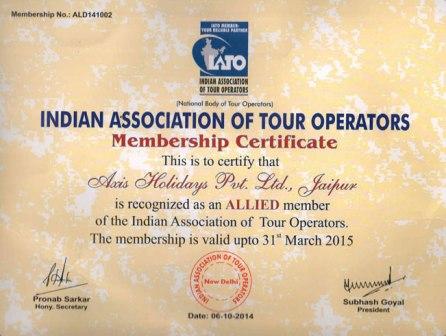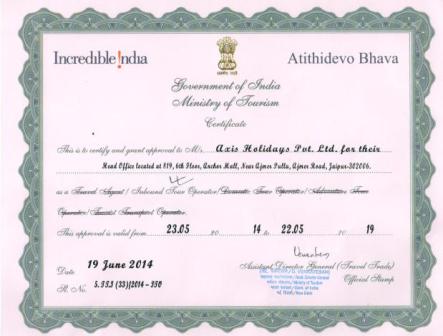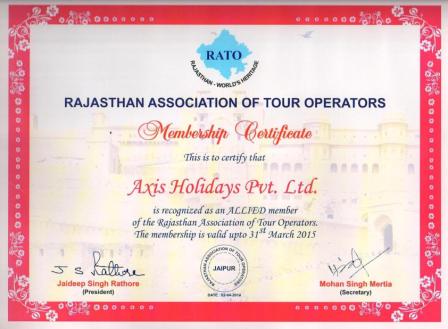
India Pilgrimage Tour
When it comes to religious pilgrimages, the best place to go and visit is definitely Rajasthan in India. Taking a pilgrimage to India is one of the most spiritually rewarding experiences one can live, as it puts one in contact with what the Indian culture and spirituality meant across the centuries. Getting to know how a diverse territory such as India maintained its culture and forms of spirituality is really quite the experience. If this is something that appeals to your tastes, try one of the pilgrimage tour packages India that we prepared for you in order to see the temples of Shiva in South Rajasthan or to witness a Jain pilgrimage and a real confession of devotion.
PILGRIMAGES
Most rulers of Rajasthan either constructed temples dedicated to their family deity and religion, or permitted the grant of land to the Jains and their feudatory chiefs and nobles to erect temples according to their beliefs. They also assigned villages to these centres for their maintenance. No wonder, every home has its deity, every village its temple.
Pilgrimages to such centres are generally performed as acts of faith and devotion for the accumulation of religious merit or as atonement for sin. Temples, reservoirs, shrines; the are not only centres of worship, prayer and pease but also places of architectural wonder.
While any pilgrims prefer to travel in comfort, some perform arduous rituals that range fro punishing exercises to fasting. The best moments at these centres are the time of the aarti (ritual prayer) and the singing of bhajans (hymns)
NORTH RAJASTHAN
AJMER
Of the many popular pilgrimages in Rajasthan, Ajmer is the most ancient and sacred to the three faiths: Islam, Jain and Hindu.
West of the city is Pushkar, with its holy lake, the Pushkar sarovar, regarded as the most sacred lake in India. Surrounded by many fine temples and their stepped ghats, the lake remains dotted with devotees and bathers intent on their ritual oblations. The view becomes more enchanting at the time of the Kartik Snana when thousands of pilgrims gather on the steps to bathe in its holy water. According to legend, the origin of Pushkar lake dates to a time when Brahma dropped a lotus here to create a lake, thereafter, the temple was erected by the devotees. In course of time, Pushkar also became a centre for camel and cattle fair. Held in November, this incredibly colorful even has become a major tourist attraction all around the world.
AJMER is also a great centre of Muslim pilgrimage. The Dargah Sharif built in honour of Khaja Moinuddin Chisti lise in the heart of the city. Considered second only to Mecca-Madina as in Islamic shrine, and visited by people of all religions the Mughal emperors Akbar, Jahangir, Shahjahan would visit here annually to offer their tribute.
The Urs, held in the first week of the Islamic month of Rajab, attracts, thousands of pilgrims to Ajmer, making it the largest Muslim fair in India. The lighting of incense, offering of flowers or chaddar (woven garlands) on the grave of the saint, the reading of the scriptures, and passionate singing of the quawalli songs are a few of the important religious rites associated with the Urs.
The holy town has great value for Jainism for Jainism too. Naiyan, the Digambar temple in the middle of the town, is one fo the most important Jain temples in Rajasthan. Its Svarna Nagari Hall consisting of gilt wooden representations of scenes from Jain mythology is interesting.
Meera Temple, Merta : Also known as Charbhuja Temple, it is here that the mystic princess Meera Bai composed her hymns to Krishna, and sang them for thousands of pilgrims. Devoted to Krishna the temple is famous because of its association with the poetess who abandoned her palace to devote herself to singing the praise of her lord.
JAIPUR
Jaipur city has a number of well known temples that are popular with both residents as well as visitors. Chief among these is the temple of Govind Devji. The annual mela in March at Chaksu is a colorful event. But the recently renovated Jhulelal Temple is a new addition to the Pink City’s attractions, though it has always been a source of pilgrimage for members of the Sindhi Community.
The Jhulelal Temple is dedicated to the patron said of the same name, and is located in the tourism zone of Hawa Mahal, on the Amber Road. The white temple complex is situated within a garden and stands on an elevated platform that is reached by a verandah supported by pillars. A dome is painted entirely with scenes depicting the birth and childhood of Lord Krishna. Idols of Jhulelal and Durgam the Guru Granth Sahib and images of other deities lend the temple a tranquil grace.
Ganesh Temple at Ranthambhor is visited by devotees round the year. Shri Mahaveerji is famous a a centre of Jain pilgrimage. The temple is vast complex that ha been constructed with white sandstone. Nearby is Kailadevi in Karauli. Kama in Bharatpur is of importance for Vallabhacharyis.
In Jaipur, the temples of Govind Devji, Motidungri Ganesh and Galta remain popular.
Shekhawati
Venkatesh Devasthan, Sujangarh : A recent temple, completed in 1994 in the Shekhawati region, Sri Venkatesh Devasthan is dedicated to Lord Venkatesh, as Vishnu is known in the South. And with good reason, for this temple is a replica of the temple in Tirupati, complete with its gopurams and sculpted façade. Specific times have been set for the ritual prayers offered at dawn, in the morning, and in the evening, though the temple is open throughout the day.
Khatu Shyamji, Sikar: In the tie of myths, Krishna – or so goes the legend – asked for the head of a Brahmin named Babhruvahan. The Brahmin readily sacrificed himself, and the pleased Krishna then placed the head upon a hillock, to be worshipped in his own name. The annual fair at the temple of Khatu Shyamji is an added attraction.
SOUTH RAJASTHAN
South Rajasthan is a canton of marvelous temples and religious places. A good base from which to tour this part of the state is Udaipur. Nathdwara, 50 kms nort of Udaipu, is a renowned centre of Vaishnav pilgrimage. The temple of Shrinathji was built in the early 18th century. It is said the black marble image of Krishna was brought from Mathura and enshrined here to save it from the hands of the destroyers during Aurangzeb’s reign. The image of Shrinathji is laso a favourite subject of paintings. The Annakoot festival just after Deepavali attracts thousands of pilgrims from all parts of India. Holi and Janmashtami is also celebrated with great enthusiasm.
Threatened by Aurangzeb’s anti-idolatry stance, the Vallabhi sect under Goswami decided to flee to seek sanctuary in a journey that, eventually, took the idol of Shrinathji to Nathdwara. But en-route, the passage included a spot 18 kms from Kota where the footprints of an adolescent Krishna are enshrined. This makes it an immensely popular pilgrimage, surrounded by water bodies and natural attractions. The temples with its enclosed walls, courtyard, kitchen, large chambers and the shrine is managed by Shri Nathdwara Temple Trust Nathdwara.
Another important seat of Vaishnavism is Kankroli, 65 kms from Udaipur. It ranks very high among the teimples of the Vallbhacharya sect. The Krishna image in the temple is popularly called Dwarkadhish. West of Kankroli is the temple of Charbhujaji constructed by Rana Mokal in the early 15th century. A grand fair is held here every year attracting crowds of pilgrims.
Eklingji, 22 kms north-east of Udaipur, was build in 734 AD as a beautifully sculpted temple complex of 108 temples within its high fortified wall. The main temple is built of granite and marble and has an ornate, pillarded. Hall, the Mandap, under a pyramidal roof. There is a four-faced image of Shiva in black marble. Outside, opposite the west facing side of Shiva is statue of the bull, Nandi, Shiva’s Vehicle. The story goes that Bappa Rawal, the founder of Mewar, had it constructed, and ever since, Eklingji has been regarded as the true ruler of Mewar on behalf of whom the Sisodia clan governs the state. Nearby is Nagda, the old capital of Mewar, with many temples dating from the 4th century AD, mostly worshipped and respected the Bhil tribals A fair is held on the occasion of Shivratri.
South Rajasthan is thickly populated by tribals who maintain their religious identity. Baneshwar is one of their principal pilgrimages. A temple with a Shivalingam located at the confluence of the So and Mahi rivers forms the focus for an annual fair
Galiyakot, once the capital of the Parmars, is renowned for its maginificent shrine of Sayed Fakruddin. Sacred for the Bohra sect. pilgrims flock to this Dargah thought the year, and thousands throng here during the Urs.
JAIN PILGRIMAGES
The Jain community is comparatively small, but it found patronage in the Rajput Kingdoms and went on to build temples with ostentatious sculpturing at odds with the extreme austerity they practice.
Mout Abu, South of Udaipur, has a history replete with sages and saints, myths and legends. Till the 11th century, it was an important Vaishnav and Shiv pilgrim centre, but today, it is recognized more as a jain pilgrim centre. The Dilwara group of Jain temples, built in 1031 AD, is among the finest examples of Jain Architecture in the country. The complex has four temples in which the art of carving marble reached unsurpassed heights, especially the Vimalshahi, Lunavashahi, Rishabhdeo and Chaumukha. Sculpted from marble, every pillar, arch and ceiling has been carved with great delicacy.
The region teems other than Jain piligrimages comprising Ranakpur, Ghanerao, Nadol, Narlia and Varkana described as the panchrithas (five pilgrimages). The splendid temple complex at Ranakpur is one of these five main holy places for the Jains. Built over five centuries ago, these temples are well preserved. The main temple, popularly called Cahumukha, is dedicated to the Tirthankara Rishabhdeo. Open on all four sides, it enshrines the four-faced image of Adinath. Rising three storeys, the temple has four small shrines with 80 spires supported on 420 columns. A small Parshvanath shrine faces the main temple.
Within the complex, there is also the Sun temple, with carvings of warriors, horses and solar deities riding chariots
Mt.Abu’s Nakki Lake is a gathering point for tribals from Rajasthan, Gujarat and Madhya Pradesh. The gather here to offer prayer for their dead relatives, take a holy dip and offer prayers to Goddess Ambika. This congregation of devotees turns into an annual tribal fair.
Thar Desert
Western Rajasthan has several temples of great renown. The Karni Mata temple at Deshnok, 32 km from Bikaner, is unique. Devotees offer milk, grains and sweets to rats that fearlessly roam in the temple. These rats are believed to be the repositories of the souls of dead Charans, the traditional bards. Sighting the white rat is considered especially auspicious. On the occasion of Navratri, this temple host a fair.
Close to Bikaner, and associated with Kapil Muni is Kolayat, a holy reservoir around which temples have been built.
Jaisalmer has earned high renown for its Baba Ramdev Temple. A pilgrim centre that symbolizes national unity and communal harmony since devotees of all religions come here, the Ramdev temple at Ramdevra-Runich, 13 km from Pokran houses the shrin of Ramdevji – popularly recalled in songs as Ramshah Pir. He is believed to have performed several miracles in his lifetime.
One of the best known pilgrimages in the deep desert is Nakoda. On the road from Jodhpur to Barmer, the Nakoda Parshvanath temple is located in a valley surrounded by high hills. Other temples within are Shantinath, Pundarik Swami Charbhuja and Bhairon
Hadoti Region
Comprising Kota – Bundi – Jhalawar and Baran districts, the Hadoti has a number of important places of pilgrimage bu the biggest is Keshoraipatan, on the bank of the Chambal. No less important is Chandravati. The sun temple (Padmanath) is a very fine one.
The Chankari Jain temple is Jhalawar District near Khanpur is famous as Jain pilgrimage, while at Sitabari near Kelwara, en route to Shivpuri, a fair every June attracts a very large number of tribals from the neighboring areas.
Tree Pilgrimage
Khejarli, near Jodhpur, where 363 lives were sacrificed to protect Khejri trees, is a place of worship for Bishnois, Kalpvarksha of Mangliawas near Ajmer is regarded as a place of pilgrimage, Annual fairs are held at both places.













